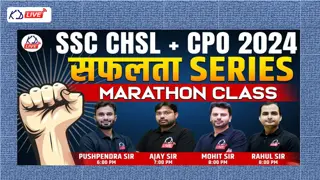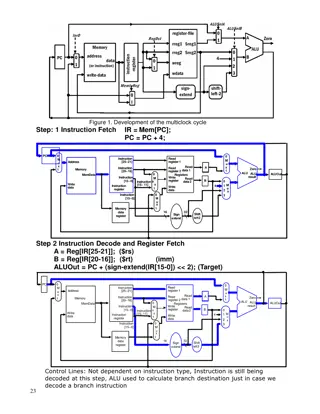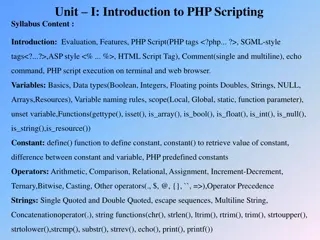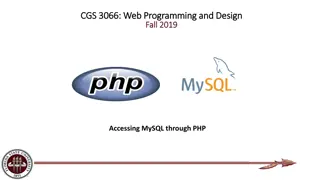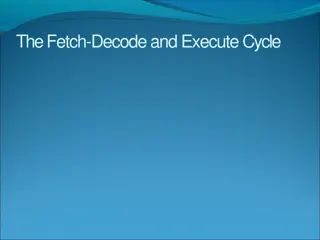
Advanced String Matching Algorithms and Subset Finding
Explore advanced topics in string matching algorithms including modifying the KMP algorithm, optimizing table computations, and computing minimal cost matrices for string conversion. Design an algorithm for finding a nonempty subset of integers with specific properties.
Download Presentation

Please find below an Image/Link to download the presentation.
The content on the website is provided AS IS for your information and personal use only. It may not be sold, licensed, or shared on other websites without obtaining consent from the author. If you encounter any issues during the download, it is possible that the publisher has removed the file from their server.
You are allowed to download the files provided on this website for personal or commercial use, subject to the condition that they are used lawfully. All files are the property of their respective owners.
The content on the website is provided AS IS for your information and personal use only. It may not be sold, licensed, or shared on other websites without obtaining consent from the author.
E N D
Presentation Transcript
Homework #7 Boren Xiao
Problem 1 Modify the KMP string matching algorithm to find the largest prefix of B that matches a substring of A. In other words, you do not need to match all of B inside A; instead, you want to find the largest match (but it has to start with ?1).
Problem 2 Consider the next table as in the KMP algorithm for string B[1::9] = abaababaa. i 1 a -1 2 b 0 3 a 0 4 a 1 5 b 1 6 a 2 7 b 3 8 a 2 9 a 3 B next Suppose that, during an execution of the KMP algorithm, B[6] (which is an a) is being compared with a letter in A, say A[i], which is not an a and so the matching fails. The algorithm will next try to compare B[next[6]+1], i.e., B[3] which is also an a, with A[i]. The matching is bound to fail for the same reason. This comparison could have been avoided, as we know from B itself that B[6] equals B[3] and, if B[6] does not match A[i], then B[3] certainly will not, either. B[5], B[8], and B[9] all have the same problem, but B[7] does not. Please adapt the computation of the next table so that such wasted comparisons can be avoided.
Problem 2(Cont.) redefine the next table
Problem 2(Cont.) i 1 a -1 2 b 0 3 a 0 4 a 1 5 b 1 6 a 2 7 b 3 8 a 2 9 a 3 B next i 1 a -1 2 b 0 3 a -1 4 a 1 5 b 0 6 a -1 7 b 3 8 a -1 9 a 1 B next
Problem 3 Given two strings ? = ????? and ? = ??????, compute the minimal cost matrix ?[0..5,0..6] for changing the first string character by character to the second one. Aside from giving the cost matrix, please show the details of how the entry ?[5,6] is computed.
Problem 3(Cont.) b 1 1 1 1 2 3 4 b 2 2 2 1 2 2 3 a 3 3 2 2 1 2 2 a 4 4 3 3 2 2 2 b 5 5 4 3 3 2 3 a 6 6 5 4 3 3 2 0 0 1 2 3 4 5 0 1 2 3 4 5 a b a b a ? 4,6 + 1 ? 5,5 + 1 ? 4,5 ,? 5 = ? 6 ? 5,6 = ??? = min 4,4,2 = 2
Problem 4 Design an algorithm that, given a set of integers ? = ?1,?2, ,??, finds a nonempty subset ? ?, such that ?? 0 ??? ? ?? ? Before presenting your algorithm, please argue why such a nonempty subset must exist.
Problem 4(Cont.) Let ??= ?1,?2, ??and ??= ?1,?2, ??, ?? (1 ? < ? ?, ?? ??). Let ?? is the sum of ?? mod ?, so its value can be 0,1, ,? 1. If ??= 0, ?? is the required subset. Else, because the value of ?? only can be 1, ,? 1, and we have ? remainders, so according to Pigeonhole principle, there must be two remainder with the same value. So, we can find (?,?) that ??= ??,1 ? < ? ?. The required subset is Sj Si= ??+1 , ,??.
Problem 5 You are asked to design a schedule for a round-robin tennis tournament. There are ? = 2? (? 1) players. Each player must play every other player, and each player must paly one match per round for ? 1 rounds. Denote the players by ?1,?2, ,??. Output the schedule for each player. (Hint: use divide and conquer in the following way. First, divide the players into two equal groups and let them play within the groups for the first ? the games between the groups for the other ? 2 1 rounds. Then, design 2rounds.)
Problem 5(Cont.) 1 2 3 4 5 6 7 8 1 2 3 4 5 6 7 8 1 2 3 4 5 6 7 8 2 1 3 5 8 4 6 7 Divide divide a group into two sub-group Conquer let two sub-group play against each other
Problem 5(Cont.) 1 2 1 4 3 6 5 8 7 2 3 4 1 2 7 8 5 6 3 4 3 2 1 8 7 6 5 4 5 6 7 8 1 2 3 4 5 6 7 8 5 4 1 2 3 6 7 8 5 6 3 4 1 2 7 8 5 6 7 2 3 4 1 1 2 3 4 5 6 7 8



